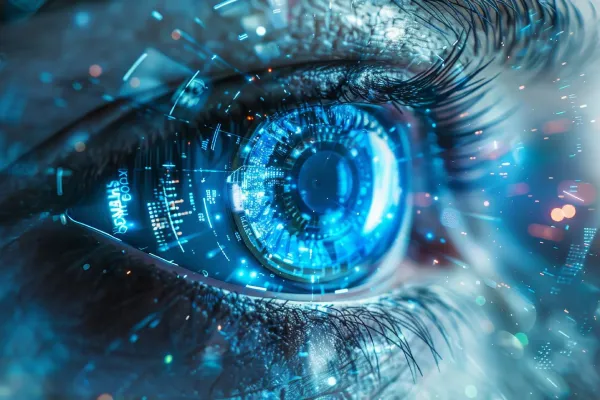
The Heart-Hacker in Your Eye
The Heart-Hacker in Your Eye: What the Retina Knows That Doctors Don’t
Lead-In: “Let’s Talk About What Nobody Tells You”
You go to the doctor, maybe get your cholesterol and blood pressure checked, and think you’re ahead of the game. But what if your actual risk of heart disease isn’t written anywhere you can see—except for a hidden map inside your eyes? It’s time to challenge everything you thought you knew about how cardiovascular risks are spotted, and why the most valuable health secrets might be staring right back at you in the mirror.
Series of ‘Unknown Facts’ / Key Insights
Unknown Fact #1:
Your Retina Is a Secret Data Chip
It’s not just for sight—your retina is a living illustration of what’s happening in the arteries and veins throughout your whole body.
The same fragile vessels behind your eyes are mirrors for the health of your heart and brain.
Tiny twists, narrowings, or widenings aren't just quirks—they’re signals that can precede serious risks like heart attacks or strokes.
Many of these clues appear years before symptoms do.
Unknown Fact #2:
Artificial Intelligence Can Read Your Risks—Before They Show Up on Tests
With advanced AI, subtle abnormalities that would stump even veteran specialists can be detected in seconds.
Deep learning models compare thousands of retinal images to pinpoint risk factors that humans simply can’t see.
Algorithms run what's called “ensemble learning”—think of it as multiple brains working together, each seeing something different, and voting on what matters.
The surprising part: accuracy rates are now beating traditional clinical approaches.
Unknown Fact #3:
Your Digital Fingerprint Is Bigger Than You Think
Each retinal scan creates more than just a prediction—it generates a treasure trove of metadata.
Vessel diameters and unique vascular patterns
Subtle color gradations and shadow contours
Historical “digital twin” snapshots that can track changes over time

How it Actually Works (The “Training Loop” Section)
Second 1: An eye image is snapped—quick, painless, no needles.
Minute 1: AI scans and segments the vessels.
Hour 1: Millions of hidden patterns are matched against global data, transforming your scan into a predictive report.
Week 1: Models keep learning from new images, so the system gets smarter with every patient.
Analogy: Imagine a security scanner at the airport, but instead of finding metal objects, it finds invisible warning signs for disease before anyone else can.
Digital Fingerprint / Metadata Section
Here’s what gets logged during one “eye exam:”
Ratios of artery and vein diameters—crucial for predicting constriction risks
Anonymized timestamps and image origins—no personal details disclosed
Patterns so unique, it’s like a health “fingerprint,” not just a photo
Hypothetical Scenarios
Disclaimer: Illustrative only—not real cases
Scenario 1:
“The Silent Stroke Alarm”
A young executive with perfect cholesterol gets a routine eye test. The AI flags vessel narrowing invisible to human eyes. Six months later, minor symptoms begin, but proactive treatment is already underway.
Scenario 2:
“Beyond the Blood Test”
An athlete passes every fitness check—until retinal imaging reveals vessel tortuosity. He’s monitored and avoids future cardiac events.
Scenario 3:
“Gen Z Preventer”
A digital-native university student gets her first scan. Subtle color shifts warn of a hereditary risk no previous doctor caught. She starts lifestyle changes early.
Additional Unknown Fact:
AI Emergent Effects: The ‘Telephone’ Phenomenon
As more images get processed, the system blends signals from hundreds of sources—sometimes uncovering risks that no single doctor or study could find.
AI might pick up patterns across populations and time, surprising even the researchers.
These “emergent effects” mean every scan and diagnosis gets smarter and more robust, but with the occasional unpredictable insight.
Business Bottom Line / Call To Action
Why does all this matter?
Early detection = saved lives and lower health costs
Personalized risk management, years before traditional symptoms
Competitive advantage for clinics and insurers adopting AI healthcare
Practical Recommendations:
Encourage routine retinal AI screening for early risk detection
Leverage anonymized digital fingerprints for ongoing health tracking
Stay updated as AI models evolve—don’t get left behind
Want to discover what your retina says about your future?
Get in touch with Sharktech Global and find out how hidden signals could help you make smarter choices—before anybody else sees them coming.
At Sharktech, we say it straight—eyes aren’t just windows to the soul. They're blueprints for your health.
